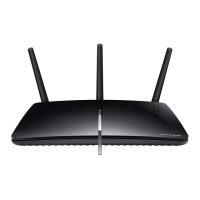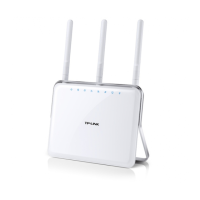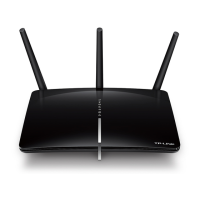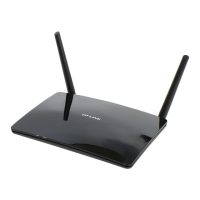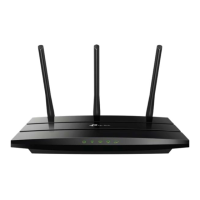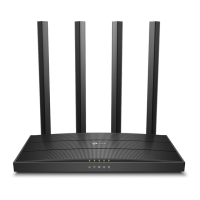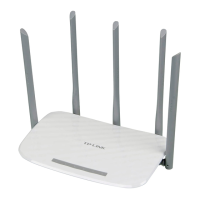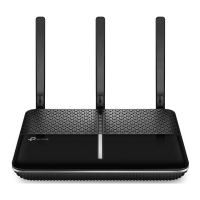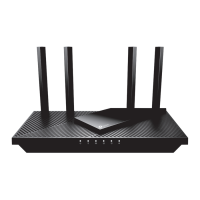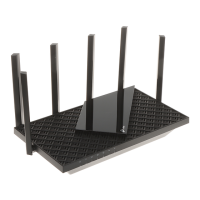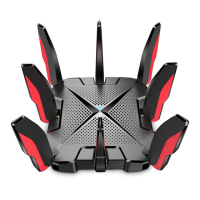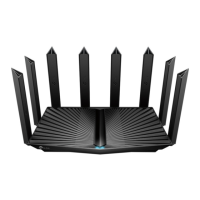Do you have a question about the TP-Link Archer D2 and is the answer not in the manual?
Provides a general description of the Archer D2 AC750 modem router and its capabilities.
Lists the key features and specifications of the Archer D2 AC750 modem router.
Details the physical ports and indicators on the front and back panels of the modem router.
Outlines the necessary hardware and software for setting up the modem router.
Provides guidance on the optimal placement and environmental conditions for the modem router.
Step-by-step instructions for physically connecting the modem router to the network and power.
Explains how to configure TCP/IP settings on your computer for initial router setup.
Guides users through the initial setup process using the Quick Setup Wizard.
Details how to access and log into the modem router's web management interface.
Shows how to view current device information, DSL, WAN, LAN, and wireless status.
Guides users through the initial setup process using the Quick Setup Wizard.
Allows selection between DSL Modem Router Mode and Wireless Router Mode.
Covers network configuration, including WAN, LAN, IPv6, and IP/MAC settings.
Configures the Dynamic Host Configuration Protocol server for automatic IP assignment.
Manages basic and advanced settings for the 2.4GHz wireless network.
Manages basic and advanced settings for the 5GHz wireless network.
Explains how to configure firewall rules and access control for network security.
Provides tools for system management, including logs, time settings, and firmware upgrades.
| Ethernet LAN | Yes |
|---|---|
| Networking standards | IEEE 802.3, IEEE 802.3ab, IEEE 802.3u |
| Ethernet LAN data rates | 10, 100, 1000 Mbit/s |
| Ethernet LAN interface type | Gigabit Ethernet |
| Wi-Fi band | Dual-band (2.4 GHz / 5 GHz) |
| Wi-Fi standards | 802.11a, Wi-Fi 5 (802.11ac), 802.11b, 802.11g, Wi-Fi 4 (802.11n) |
| Top Wi-Fi standard | Wi-Fi 5 (802.11ac) |
| WLAN data transfer rate (max) | 433 Mbit/s |
| USB version | 2.0 |
| Input current | 1.5 A |
| Rack mounting | No |
| Frequency band | 2.4 & 5 GHz |
| Bandwidth (first) | 2.4 GHz |
| Bandwidth (second) | 5 GHz |
| USB ports quantity | 1 |
| WLAN data transfer rates supported | 300, 433 Mbit/s |
| USB 2.0 ports quantity | USB 2.0 ports have a data transmission speed of 480 Mbps, and are backwards compatible with USB 1.1 ports. You can connect all kinds of peripheral devices to them. |
| Ethernet LAN (RJ-45) ports | 3 |
| DHCP server | - |
| Security algorithms | 128-bit WEP, 64-bit WEP, WPA, WPA-PSK, WPA2, WPA2-PSK |
| Antenna gain level (max) | 9 dBi |
| Product type | Tabletop router |
| Product color | Black |
| Storage temperature (T-T) | -40 - 70 °C |
| Operating temperature (T-T) | 0 - 40 °C |
| Storage relative humidity (H-H) | 5 - 90 % |
| Operating relative humidity (H-H) | 10 - 90 % |
| Cables included | LAN (RJ-45), Phone (RJ-11) |
| Output voltage | 12 V |
| Depth | 160 mm |
|---|---|
| Width | 229 mm |
| Height | 37 mm |
| Weight | - g |
